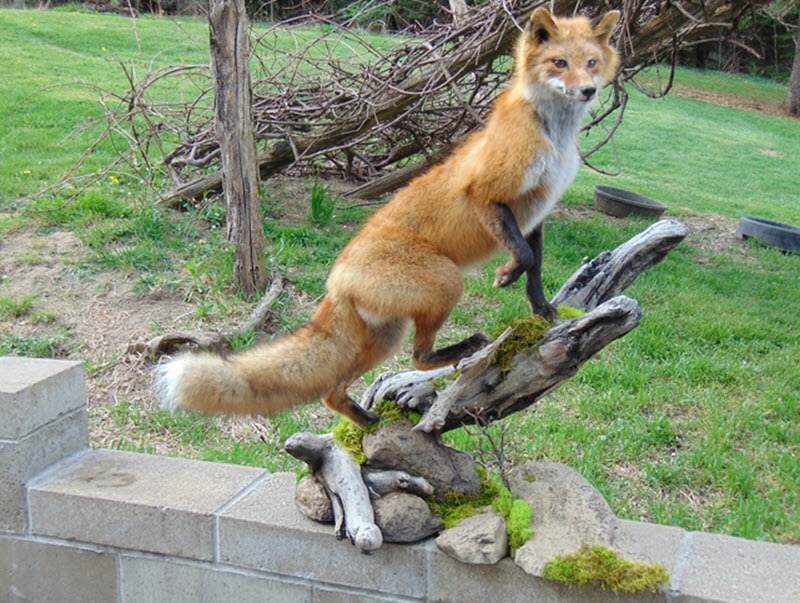Contents
The traditional skin-mount
To make a traditional mammal skin-mount, the skin is removed from the dead mammal. Depending on the characteristics of the mammal, the skin is then tanned or treated chemically in some other way to keep it from decomposing.
The mammal skin can then be mounted on a mannequin. Such as mannequins can be constructed from various materials, such as wood, polyurethane, or wool + wire. Alternatively, the taxidermist can use the actual skull and bones from the animal to make the mannequin, typically in combination with wire + wood wool, hemp wool or tow.
Artificial eyes of glass or plastic are added to make the taxidermy mount more lifelike. In some cases, it is also necessary to add other artificial parts, e.g. teeth and tongue.

The freeze-dried mount
Freeze-drying is a modern way of intentionally preserving mammals and some other animals types, although quite a similar process does occur now and then in nature when animals die in conditions where the cold and aridness prevents the body from going through the normal process of decomposing. Such natural mummies are especially common in high-altitude environments.
In taxidermy, freeze-drying (also known as cryodesiccation or lyophilisation) is a low-temperature dehydration process that involves freezing the animal or animal parts, lowering the pressure, and then removing the ice by sublimation. Through sublimation, the ice transitions directly from its solid phase to gas, without passing through the intermediate liquid phase.
Before a mammal is taxidermically freeze-dried, the internal organs are removed, but the skelleton and all accompanying musculature is allowed to stay. The mammal is then positioned in the desired pose and placed in the chamber of a freeze drying machine.
During the dry-freezing process, the machine doesn’t just lower the temperature inside the chamber but also changes the air pressure by creating a near vacuum. The pressure helps vaporize moisture and make it leave the body. The higher the pressure, the faster the drying proess will be.
A quick dry-freezing process is desirable, since it decreases the risk of tissue distortion (shrinking, wrinkling, warping, etc). Still, large mammal specimens can need several months in the chamber, sometimes up towards half a year.
Pet preservation
For several reasons, freeze-drying has become a favored method for preserving mammal pets such as cats. The process of freeze-drying is percieved as less invasive than a traditional skin-mount, and it is also one of the best ways to capture the geist of the animal as it looked when it was alive.
Attractive to insects
Compared to a traditional skin-mount, a freeze-dried animal is more likely to suffer insect damage, especially if it is not chemically treated. A free-dried animal has much more organic matter (including muscle and fat) available for insects to feed on.
